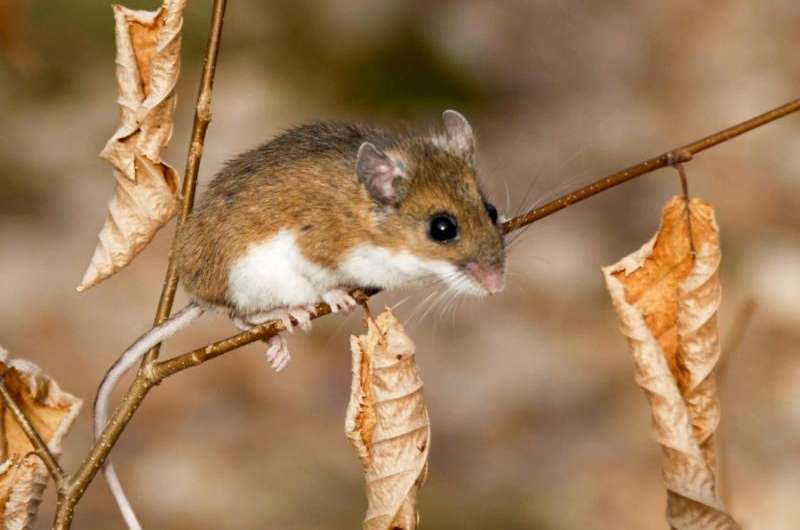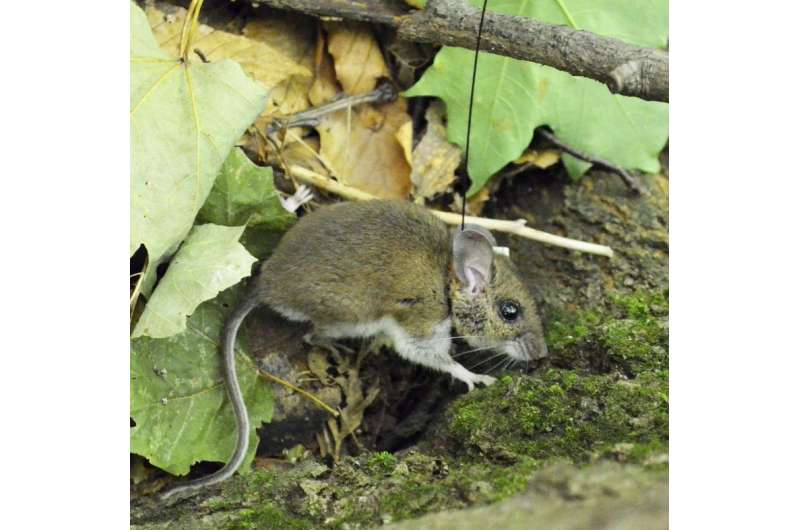The white-footed mouse is one of the hosts that provides a blood meal for the ticks that can spread Lyme disease. Credit: Phil Myers, http://animaldiversity.org
White-footed mice in Howard County, Maryland are being collared as part of a study to improve control of the ticks that spread Lyme disease. The mouse collaring research, never before done in Maryland, is a partnership of the Agricultural Research Service (ARS), Howard County Department of Recreation & Parks (HCRP), and University of Maryland (UMD).
The mouse tracking is part of a larger five-year ARS Tick Management Project evaluating the use of minimal pesticide or integrated pest management methods to lower the number of black-legged ticks. Some of those ticks carry Lyme disease-causing bacteria and are around single-family yards and gardens adjacent to large Howard County parks.
While ticks that spread Lyme disease are commonly thought of in connection with deer, it is from infected white-footed mice that these ticks usually acquire Borrelia burgdorferi, the bacteria responsible for the disease.
Starting today, an ARS and UMD team led by UMD graduate assistant Grace Hummell will live trap ten mice (5 males and 5 females) at each of four sites, using food and cotton, which is attractive nesting material, as bait. The four sites are near Cedar Lane Park, Middle Patuxent Environmental Area, Centennial Park, and Rockburn Park.
Entomologist Andrew Li, with the ARS Invasive Insect Biocontrol & Behavior Laboratory in Beltsville, Maryland, who coordinates the Tick Management Project wants the data to better understand how white-footed mice respond to bait boxes that include tick treatments like topical insecticides.
White-footed mouse with VHF radio tracking collar. Credit: Virginie Millien, McGill University
"We need a scientific basis for where we put the bait boxes, so we can have a sound expectation that mice will get enough acaricide to kill the ticks," said Li. Understanding the home range and activity pattern of mice will help improve host-targeted tick control."
Once a mouse is captured, the team will fit it with a tiny VHF radio collar to track its movements during periods of the next six weeks. The collars do not include GPS tracking units. Next, the team will recapture the mice and remove their collars.
Phase two will come after the collaring season. This will involve grid-trapping and releasing mice over multiple nights so changes in their locations is traced.
Provided by United States Department of Agriculture























